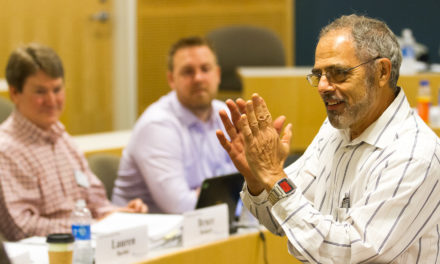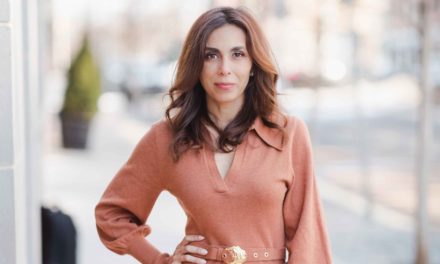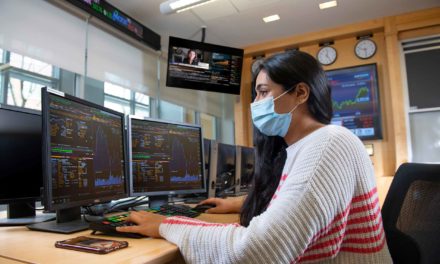A growing program that’s immersing Smeal’s graduate students in emerging markets around the world is fostering compassion for cultural differences – and stirring awe over the similarities.
Porter Metzler and a couple of friends liked to fish in streams around State College when they were finished with their classes for the day. Metzler, who earned an MBA degree in 2024, found it was a nice respite from the rigors of his studies.
Last February, Metzler and one of his fishing buddies were part of a contingent from Penn State Smeal that travelled to Ho Chi Minh City, Vietnam, through the college’s Global Immersion program. When they spotted a group of young men fishing along the banks of the Saigon River during their first day there, they made a pact to track down poles and go fishing too during their week-long stay.
It took them the entire week to do so. But when they finally made it to the river, the same group they spotted on their first day asked them to join them. They fished together for the next three hours.
“They were very excited to fish with us,” Metzler says. “One of them told us he’d fished there every day for the last 15 years and we were the first foreigners he’d seen fishing.”
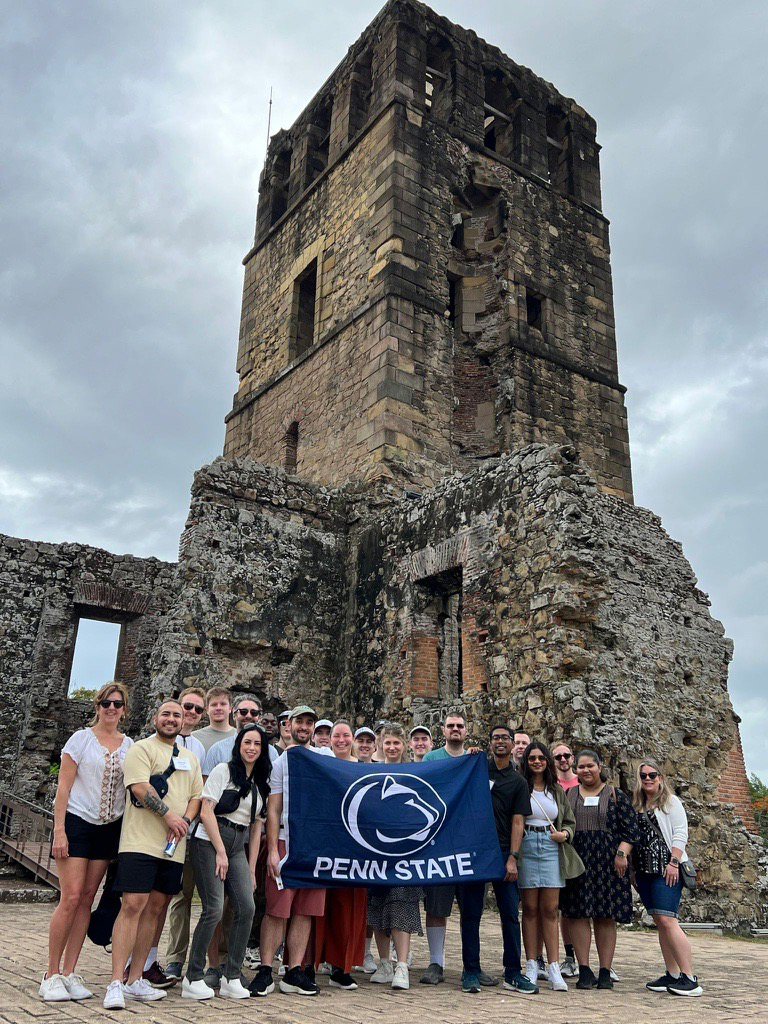
Global Immersion participants are proud to fly the Penn State flag no matter where in the world they travel.
Metzler says he learned a lot from his group’s visits to several businesses around the city that he’s already begun to apply to his new marketing job. But the experience that left the deepest impression was that afternoon along the river.
The primary intent of the Global Immersion program is educational enrichment, says Janet Duck, clinical professor of management and organization and director of Excellence in Teaching and Learning, which encompasses the program. Although, she acknowledges its profound ability to also humanize distant parts of the world that were previously unknown to students.
Metzler says he’d wanted to travel to Asia but was a little intimidated to do it on his own. Going there with a group of likeminded people and within the structure of the program’s itinerary helped it feel more accessible for him.
La’Ree Hills, who earned a master’s in business analytics degree last August, expressed a similar sentiment. He traveled with Duck and a group of Smeal students to Panama City, Panama.
With an eye toward eventually pursuing a career in international business, Hills says he wanted to experience commerce outside of the United States, something he’d never done before, but he didn’t want to venture too far from home.
He used the little Spanish he knows to order food and ask for directions. But even when he was out of his depth, Hills found the people he interacted with to be exceedingly kind and welcoming.
During a planned excursion to the Museum of Memory and Human Rights, in Santiago, Chile, when she traveled with a group from Smeal in 2013 as an MBA student, Jurudoe-Ann Martin, a native of Liberia who is now pursuing her executive doctorate of business administration at Smeal, says she was surprised to see a lot of her country’s recent history mirrored in that of Chile’s.
Duck says that she’s not immune to such reactions. While in Panama earlier this year, she and her group visited a tribe that’s turned to ecotourism for its preservation. A family from the tribe brought them along as they harvested coffee beans and roasted them. Later, they cooked them lunch. As the day progressed, Duck says she started to focus on how everyone in the family, from young children through older adults, was committed to ensuring the quality of their experience.
“It changed me,” she says. “It was just so refreshing to be confronted by people who live so differently from how we do and feel nothing but an appreciation for those differences.”
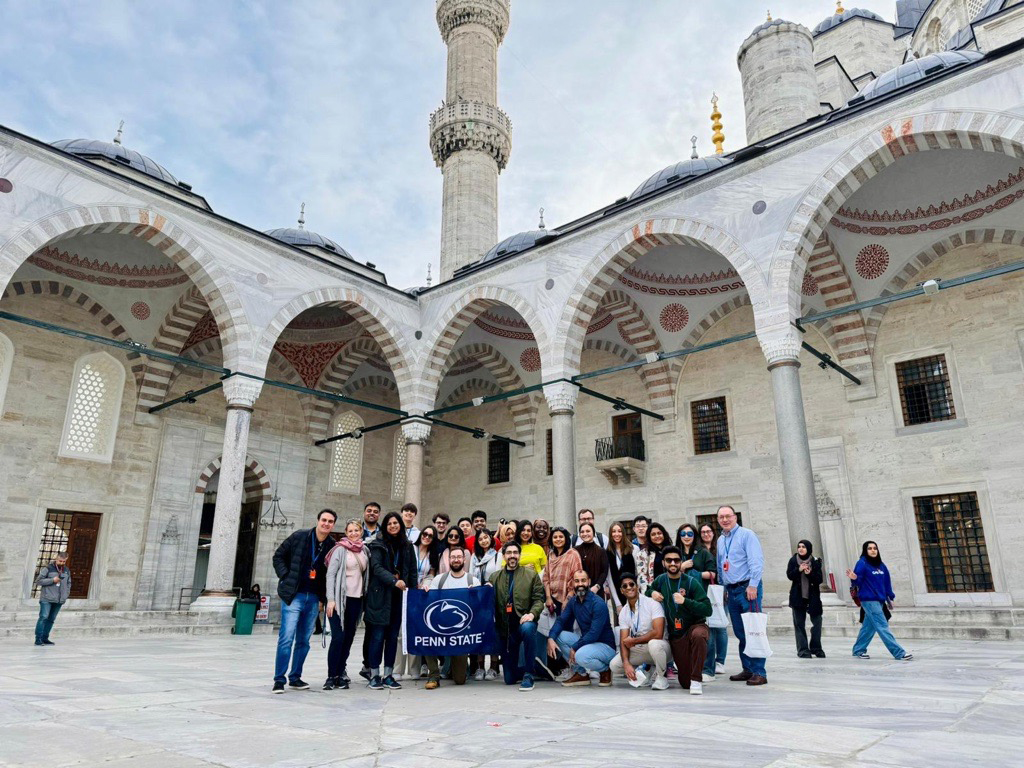
Students, on most days, are exposed to two different companies, organizations, or government offices, gaining insight into the operations of the company or agency itself, as well as an industry or field at large.
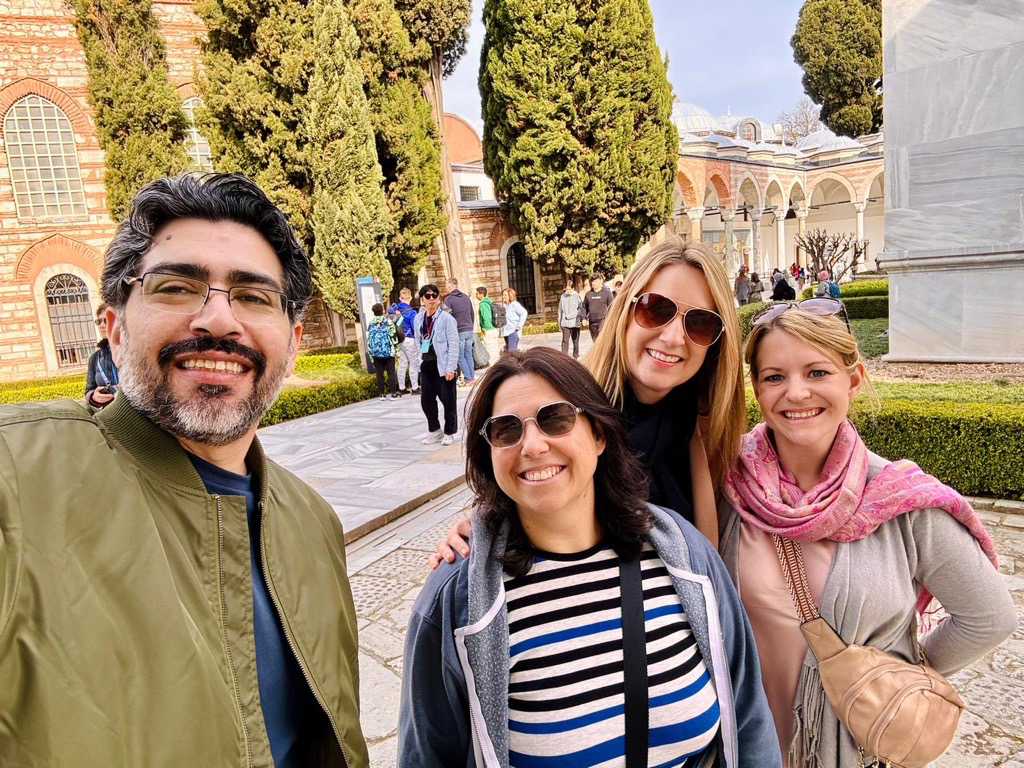
“The world is becoming increasingly global and connected and students need to see the opportunities and challenges of doing business in other countries.”
The value of immersion
The Global Immersion program started in 2004. Initially, it was open exclusively to the two-year residential and executive MBA students. It became far more inclusive during the 2022-23 academic year, when, for the first time, Smeal’s professional graduate students, residential and online, were given the option to participate. (Residential MBA students are required to participate as part of their curriculum.)
Duck says the enormous growth of Smeal’s professional graduate portfolio and student population, from around 300 in 2015 to more than 2,300 currently, created a logical incentive to expand the program.
In February, 125 graduate students from Smeal, plus a group of faculty and staff chaperones, traveled to one of three destinations, which also included Istanbul, Turkey, doubling the number of participants from recent years, according to Duck.
Students pay for the cost of their flights themselves. They also pay a “program fee,” which covers basic expenses incurred during the trip, including lodging and transportation to and from the sites featured in the itinerary.
Duck says the program’s mission has remained the same as it was originally designed: to enhance students’ business education through an immersive experience. She stresses the importance of the immersive part, noting that she and her team work closely with WorldStrides, an academic travel and logistics partner that’s been curating these kinds of trips for more than a half-century.
“Much of what students learn in graduate business programs, including Smeal’s, is based on lectures, case studies, and assignments that focus on the U.S. business environment and American companies,” says Terrence Guay, associate dean for international programs, clinical professor of international business, and director of Smeal’s Center for Global Business Studies. Guay was also a chaperone for the Vietnam expedition earlier this year, which was one of more than a dozen Global Immersion trips he’s assisted with. “But the world is becoming increasingly global and connected, and students need to see the opportunities and challenges of doing business in other countries, particularly emerging markets, where Global Immersion typically takes place.”
During the weeklong immersion, students, on most days, visit two different companies, organizations, or government offices, gaining insight into the operations of the company or agency itself, as well as an industry or field at large.
With the trip as part of his curriculum, Metzler says he and his classmates researched the destinations beforehand and discussed their observations afterward as if they were actually assessing the potential of conducting business in the host countries.
Martin says that 3M was often featured in her supply chain readings prior to the trip. After her group toured one of the company’s divisions in Vietnam and she was settled back at home, Martin reported her experience to her classmates and professor, describing an elaborate and entrenched operation that spans consumer electronics, energy management and power generation, transportation safety, medical and surgical supplies, and chemicals, among other industries.
Since opening a modest “representative office” in 1994, the company’s presence in Vietnam has grown exponentially to include its headquarters in Ho Chi Minh City, a branch office in Hanoi, and three research and development facilities in Ho Chi Minh City and Hanoi.
Guay says, “I always learn a lot on these trips that I can use when I teach on campus.”

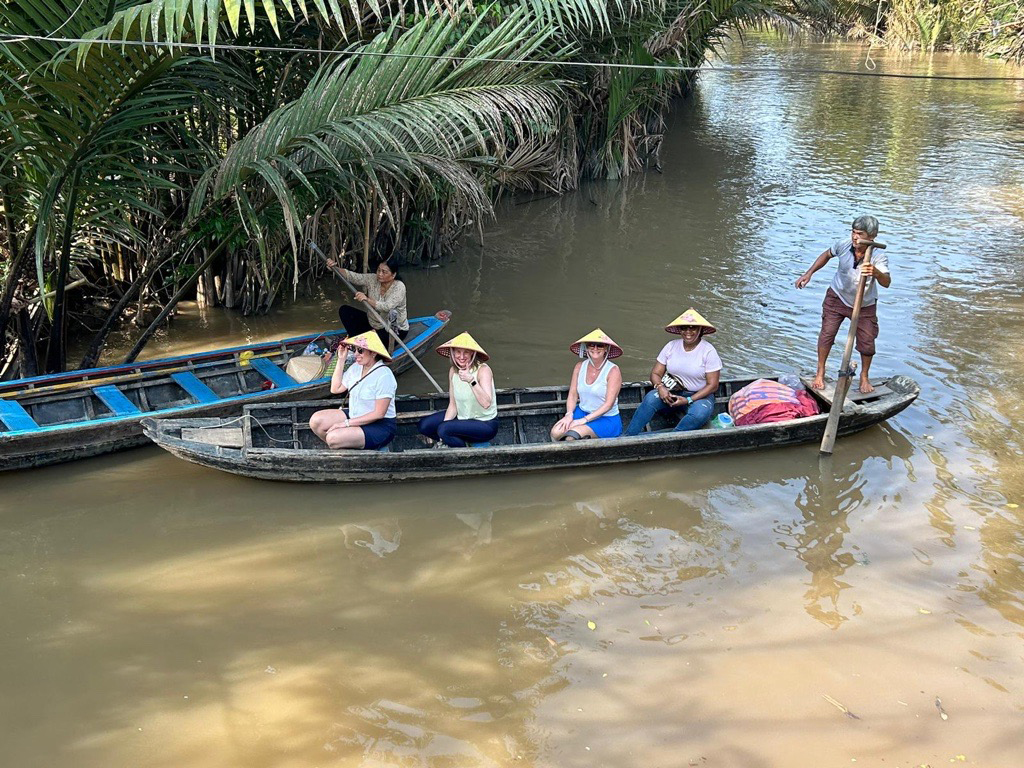
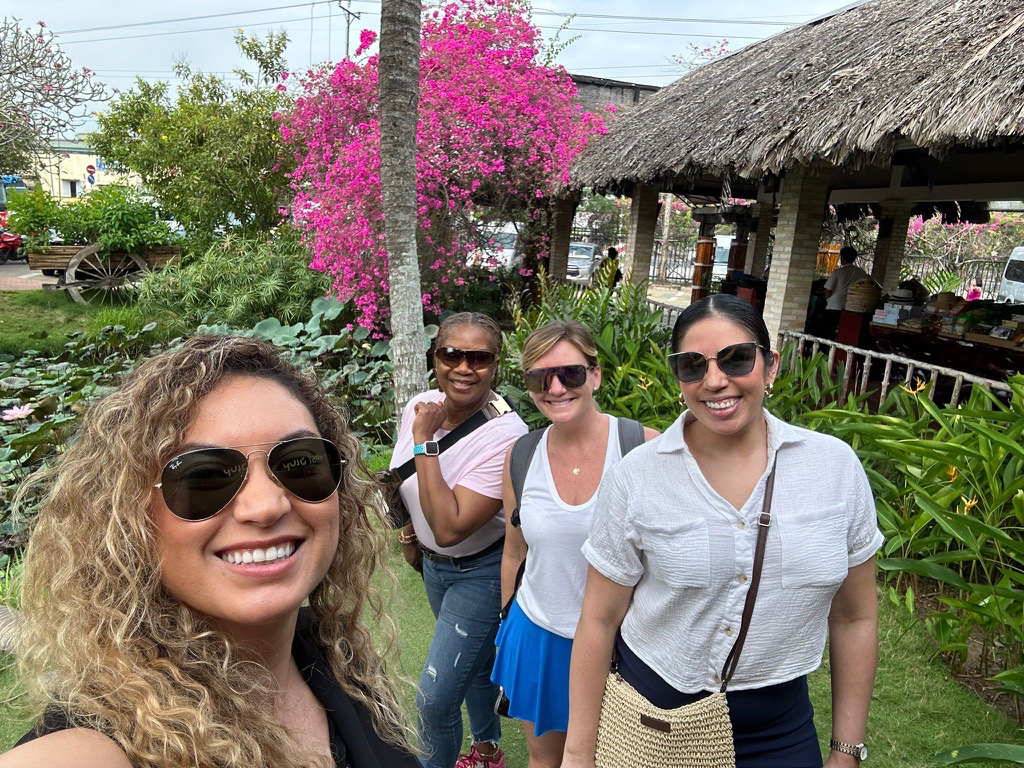
Students say that the connections they make with local culture only serves to enhance the immersion experience.
Inviting diverse perspectives
One of the program’s most compelling aspects is the opportunity it creates for students from a spectrum of programs and professional experiences to come together and share their perspectives. In fact, this is the only formal opportunity at Smeal for online students to meet in person, Duck says. It’s also the only platform where Smeal’s current graduate students commingle.
Martin says she became close to four MBA students during her trip.
“I ‘adopted’ them, because they were all around my daughter’s age,” she says, laughing.
Over the course of the week, she became a sort of mentor, sharing some of her life and professional experiences with them and serving as a sounding board for the career choices they were facing. “And I learned from them,” she says. In the months since, Martin has helped arrange interviews at her company for two of the students.
In these ways, Duck says, the program mimics real-world work environments, where professionals regularly interact with colleagues who represent a range of ages, experience, and backgrounds.
Brian Cameron, associate dean for professional graduate programs and executive education at Smeal, traveled in February with a group to Istanbul, his third Global Immersion trip as a chaperone. The conversations that unfold quietly on the bus trips to and from the hotel and at dinners, he says, provide a unique opportunity for him to check in with students in a more casual way than is often afforded by the town halls he hosts throughout the year.
“I tend to get a lot of good information about things they like about the programs, things we might want to improve,” he says. “I come back with a whole list of mental notes.”
Venturing further into the world
With the new demand for the Global Immersion program, Duck is planning to offer five international destinations in 2025.
In addition to Vietnam and Turkey, which, Duck says, are consistently two of the program’s most popular destinations, South Africa, Romania, and Costa Rica will be added to the menu.
“We’re aiming to develop between five to eight high-quality destinations, then rotate among them from year to year,” Duck says.
“I saw a lot of women working in technology in leadership positions, which reinforced my hope that what I want to do is possible.”
The groups traveling from Smeal will continue to run around 25 to 30 students per destination, she adds. With the spike in interest last year, that meant sending multiple contingents to some of the locations. This will likely become a trend.
Martin and her daughter frequently travel to Liberia on their own, where they, in part, encourage girls and young women to study math and/or engineering.
“One of the reasons I went back to school was that I have a strong desire to give back to my community, which I see as young, Black women in technology,” she says.
Martin’s come to understand that there are few women who look like her and do what she does for a living who are visiting the interior regions of Africa and serving as an example of what’s possible. She plans to change that. She isn’t sure how just yet, but she believes she’s inching closer to a master plan with this latest advanced degree and her recent trip to Ho Chi Minh City, which she describes as “inspiring.”
“I’d never been to Asia before, and I didn’t expect the workforce in Vietnam to be so young and so female,” Martin says. “I saw a lot of women working in technology in leadership positions, which reinforced my hope that what I want to do is possible.”
